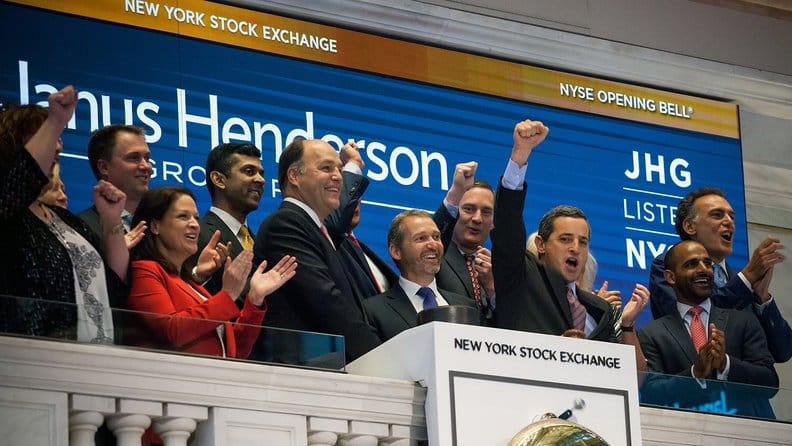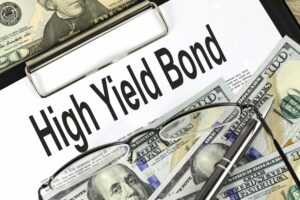JH Horizon Global High Yield Bond Review – that will be the topic of today’s article.
Learn about the JH Horizon Global High Yield Bond and compare it with the Hansard International Capital Investment Bond.
Nothing written here should be considered as financial advice, nor a solicitation to invest.
For any questions, or if you are looking to invest as an expat, you can contact me using this form, or via the WhatsApp function below.
Introduction

Janus Henderson is a UK-based global asset management group headquartered in the City of London, UK. It offers a range of financial products to individuals, advisory intermediaries, and institutional investors around the world under the Janus Henderson Investors brand.
The group’s holding company, Janus Henderson Group plc, is registered in Jersey and is dual-listed on the New York Stock Exchange and the Australian Stock Exchange (where it is a component of the S & P / ASX 100 index).
The company manages mutual funds and ETFs in five asset classes: stocks, quantitative stocks, alternatives, fixed income, and multi-asset.
As the world’s leading asset manager, Janus Henderson is committed to delivering value to clients through the relationships they have established. It is central to what active management means and the long term that they strive to deliver.
JH Investment Opportunity

The company’s investment teams and their approaches are formed with the client in mind. Products are designed to meet changing needs, and investment managers operate within clearly defined parameters to achieve set or agreed goals. Process transparency, positioning and progress towards achieving goals are central to their approach, and investment and distribution teams strive to keep customers informed at every stage.
The company offers expertise across all major asset classes with investment teams located around the world. Janus Henderson’s capabilities are grouped under five headings and more information can be found on the websites around the world.
Stock
They offer a wide range of equity strategies covering a variety of geographic areas and investing styles. The teams include those with a global perspective, those with a regional focus – the US, Europe, Asia Pacific, and emerging markets – and those who invest in specialized sectors. Various styles of growth, value, and absolute return are used. These teams typically employ processes based on fundamental research * and bottom-up stock picking.
Fixed income
The company’s fixed income teams provide proactive asset management solutions to help clients achieve their investment goals. They offer innovative and differentiated methods specifically designed to support their clients as they go through each unique business cycle, from core and diversified investments to more focused targets. The capabilities of these teams are available through separate strategies or combined into customized solutions.
Quantitative shares
Intech®, an asset management subsidiary, applies advanced mathematics and systematic portfolio rebalancing designed to exploit the volatility of stock price movements – a source of excess returns and control risk. With over 30 years of experience working with volatility, the Intech team takes a specific quantitative approach based on observing actual price changes rather than subjective predictions of companies’ future performance.
Multi-asset
Janus Henderson Multi-Asset includes teams in the US and UK. US teams manage asset allocation strategies in the US and around the world. The UK team includes asset allocators, traditional multi-manager investors, and those dealing with alternative asset classes.
Alternatives
Janus Henderson Alternatives teams manage a range of results-driven investment solutions tailored to clients’ needs and constraints. The team brings together specialized skills to manage multi-asset investment decisions with absolute returns for clients within a controlled risk framework.
What is a High Yield Bond (or Junk Bond)

Bonds deemed to have a higher risk of default and receive low ratings from credit rating agencies (i.e. Moody, S&P). The bonds are issued with a higher yield than more creditworthy bonds, which in fact brings to a higher level of risk for investors.
High yield bonds (also called junk bonds) are bonds that pay higher interest rates because they have a lower credit rating than investment-grade bonds. High-yield bonds are more likely to go bankrupt, so they must pay a higher yield than investment grade bonds to compensate investors.
High-yield debt issuers tend to be start-ups or capital-intensive firms with high debt ratios. However, some high yield bonds are fallen angels that have lost their good credit ratings.
Technically, high yield or junk bonds are a lot like regular corporate bonds in that they are both promissory notes issued by a firm promising to pay interest and return the principal at maturity. Junk bonds have a lower credit quality from their issuers.
All bonds are characterized by this credit quality and therefore fall into one of two categories of bonds: high yield and investment. High-yield bonds have lower credit ratings from leading credit agencies.
Let’s now overview the JH Horizon Global High Yield Bond, and if you will feel the need to invest in it, you can check out this form and apply if needed.
JH Horizon Global High Yield Bond
The fund seeks to provide income with capital growth potential over the long term. The fund will invest at least 80% of its net assets in sub-investment grade corporate debt securities of issuers with a credit rating equivalent to BB + or below. The fund can invest in securities with fixed and floating interest rates, as well as index securities issued by corporate, government, supranational institutions, as well as local and regional agencies.
The fund seeks to provide income with capital growth potential over the long term.
Performance Target: To beat the ICE BofA Global Limited High Return Index (100% hedge) by 1.75% per annum before fees over any 5 year period.
The fund invests at least 80% of its assets in high yield corporate bonds (non-investment grade equivalent to BB + or below) in any country.
The fund may also invest in other assets, including bonds of other types from any issuer (including perpetual bonds), cash and money market instruments.
The Investment Manager may use derivatives (complex financial instruments), including full yield swaps, in order to generate investment returns in line with the Fund’s objective, reduce risk or manage the Fund more efficiently.
The Fund is actively managed against the ICE BofA Global Limited High Return Index (100% Hedge), which broadly represents bonds in which it can invest as it forms the basis for the Fund’s performance targets. The Investment Manager may choose, at its discretion, investments for the Fund with weights other than the index or not included in the index, but sometimes the Fund may own investments similar to the index.
Key points
- The fund, managed jointly from the US and Europe, benefits from a global perspective with a local understanding
- Research focuses on identifying positive catalysts and improving balance sheets to help generate profits and avoid defaults or downgrades.
- A global approach allows access to different economies and companies at different stages of the business cycle.

The pros of high yield bonds
1. Higher profitability. High-yield bonds tend to have higher rates than investment-grade bonds. The interest rate spread can change over time, but higher-rate high-yield bonds will generally be correct, otherwise, no investor would choose a higher-risk bond over a lower-risk bond with the same rate.
2. Stable profitability. Even the highest yielding or junk bonds have a fixed and therefore predictable yield. Yes, the risk of default is higher than with an investment-grade bond, but a high-yield bond is not necessarily doomed to default. A high-yield bond can provide more stable returns than a stock.
3. Bondholders get priority when a company crashes: if the company collapses, both shareholders and bondholders risk losing their investments. In the event of asset liquidation, bondholders are paid first, followed by shareholders. Thus, a high yield bond can be considered more reliable than a share of the same company.
4. The bond price may rise due to the credit rating. When a bond is rated below ideal, there is room for improvement. This does not apply to AAA bonds. If a company gets an improved rating from one of the agencies, the bond’s price may rise.
Cons of high yield bonds
1. Higher rate of default. High-yield bonds suggest a significantly higher rate of return as they have a higher risks. During a default, the investor can lose all money, including the invested principal. Volatile companies are especially vulnerable to collapse, especially during a recession. Rating agencies strive to identify these companies.
2. Difficult to sell: in case the investor makes his investment directly in high yield bonds, it can be challenging to resell them. In general, bond trading is not as fluid as trading stocks, and high yield bonds may generate less demand or have smaller markets, and therefore may be more difficult to sell at a desired price or even sell all together.
3. The bond price may decline due to the credit rating. Just as the price of a bond can increase when the rating is improved, the price of a bond can fall when the rating is downgraded. Investors may want to find out which companies are at risk of a credit rating downgrade by one of the major agencies.
4. Sensitivity to changes in interest rates: All bonds are subject to interest rate risk. Bond prices move in the opposite direction to interest rates; they can decline in value during periods of rising interest rates.
Pained by financial indecision?

Adam is an internationally recognised author on financial matters with over 830million answer views on Quora, a widely sold book on Amazon, and a contributor on Forbes.



